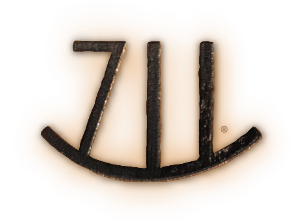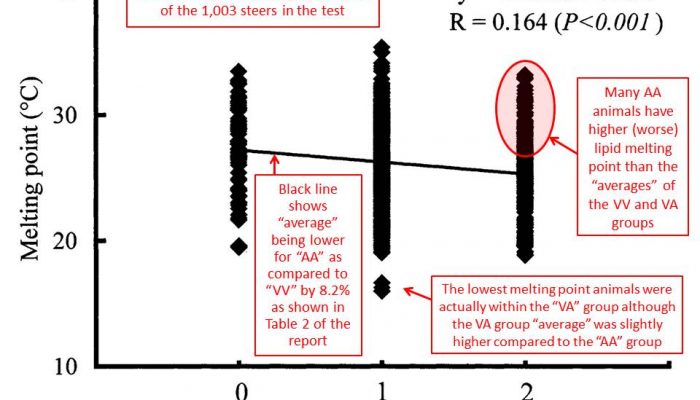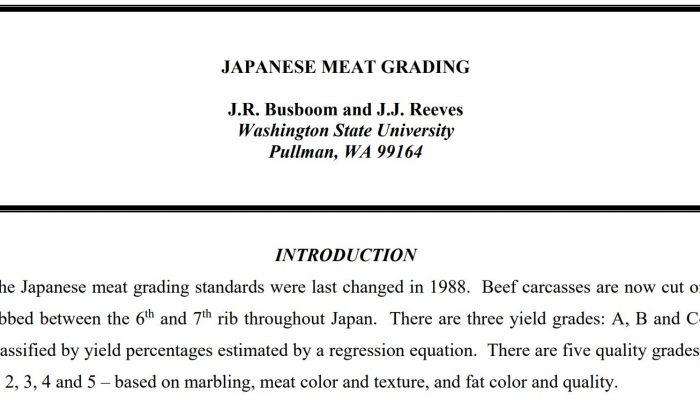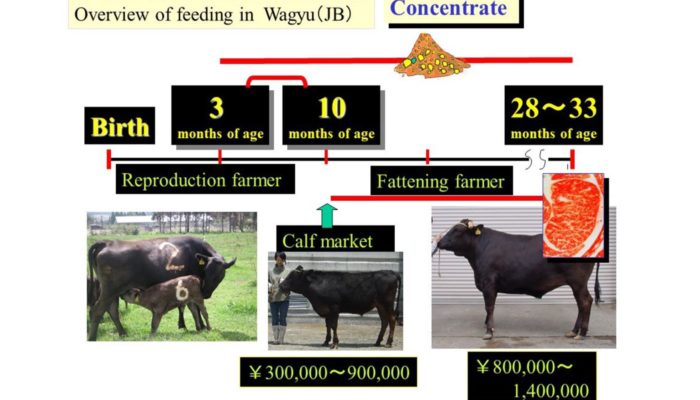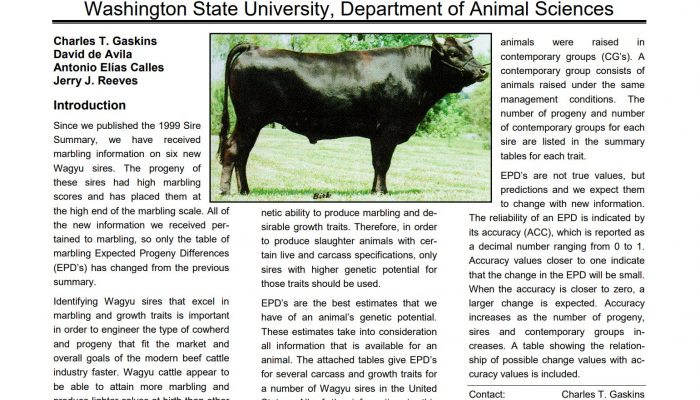The SCD DNA Test
The SCD DNA Test is a test performed by Geneseek and offered by the American Wagyu Association in a package together with the Igenity Tenderness DNA Test. The usefulness of the SCD DNA Test is a much-debated matter among Wagyu producers. The attached research paper was co-authored by eight Japanese scientists including Masaaki Taniguchi of the Laboratory of Animal Breeding and Genetics, Graduate School of Science and Technology, Kobe University. This research paper is the only known scientific study evaluating the impact of the SCD gene on the lipids (fat) of Wagyu cattle. The research project did not attempt to evaluate the lipids of Wagyu cattle vs. cattle of other breeds, but rather attempted to evaluate the impact of 0, 1 or 2 copies of the preferred “A” gene on the lipid composition of Wagyu steers fed for the same manner. This study involved feeding 1,003 100% fullblood Japanese Black Wagyu steers together in Japan and then analyzing the lipid composition of each steer, and then comparing the lipid composition among three groups (SCD genes = AA, VA or VV).
The last paragraph of the concluding “Discussion” section reads as follows: “The results of our study suggested that the genotyping of the SCD gene is a useful tool for selection of favorable flavored beef carcasses, and the other genetic factors for MUFA variation are being focused on the transcription factors of the SCD gene.”
While the authors of the report concluded that the SCD gene was a useful tool for selection of breeding stock, this has been a much-debated matter among Wagyu breeders. From the report one can ascertain that the group of animals that had the AA (preferred) genes had a lipid melting point that was 8.2% lower (25.4 degrees Celsius/77.2 degrees Fahrenheit) as compared to the group of animals that had the VV genes (27.6 degrees Celsius/81.68 Fahrenheit). See Table 2 of the report (shown immediately below) for those numbers.

- The fact that while the average of the lipid melting point was 8.2% lower for the AA genes group as compared to the VV genes group, the total variance in lipid melting point of all of the animals in the study was over 60% (ranging from approximately 17 Celsius/62.6 Fahrenheit to approximately 36 Celsius/96.8 Fahrenheit). Therefore, the configuration of the SCD genes in the animals explained a relatively small portion of the total difference in lipid melting point. See Figure 4 in the report.
- The fact that the data in the report shows that many AA animals had a higher (less desirable) lipid melting point compared to the average of the VV group, and that many of the VV animals had a lower (more desirable) lipid melting point compared to the average of the AA group. See Figure 4 in the report.
- That the animals with the absolute lowest lipid melting point were actually several animals with the VA SCD configuration (one copy of each gene) rather than AA animals. See Figure 4 in the report.
See the attached PDF file for the full report. While the scientists that authored the report concluded that the SCD gene is useful for selection of breeding stock, it is obvious from the raw data in the report that this is true only “on average” and that if one desires to select a particular animal for lower lipid melting point / higher MUFA/SFA ratio, that additional methods of evaluation of the individual animal is required, as it is obvious that many animals with the VV SCD gene configuration actually have better results than many AA animals even though the averages are better for the AA animals. Therefore, it is not guaranteed, or even highly likely, that a particular sire with the AA SCD gene configuration will positively impact the lipid attributes of such animal or its offspring, since many individual animals in the test that had the AA SCD gene configuration had worse lipid test results as compared to many individual animals in the test that had the VV SCD gene configuration. What is obvious from the report is that if approximately 1,000 sires were selected and utilized for breeding, half of which were AA and half of which were VV, that on average, the offspring should have an approximate 8.2% lower lipid melting point. See Table 2 from the attached research paper, which shows that the melting point of lipids for the AA group was approximately 8.2% lower at 25.4 degrees Celsius/77.2
So should Wagyu producers that are producing seed stock selectively breed based upon the SCD DNA test showing a result of AA? See the image below of the portion of “Figure 4” of the report, which shows a graph of the lipid melting point for each of the 1,003 steers in the test, broken into the three SCD genetic result possibilities (VV, VA and AA). This image has been annotated in red color to make it easier to understand. Importantly, the results in Figure 4 of the report show:
- That the variability (in total, from high to low) is quite large compared to the differential in “averages” between the groups
- That the lowest melting point steers in the test were actually VA, not AA, even though the “average” for the AA group was slightly lower than the VA group (approximately 2.7% lower at 25.4 degrees Celsius vs. 26.1 degrees Celsius).
- That if a particular single sire is chosen based upon having a DNA SCD result of AA, that the probability is relatively high that the animal might have a higher/worse melting lipid melting point than the “average” of VA or VV animals since there are many animals in the AA group that have worse results than the averages for the VV and VA groups.
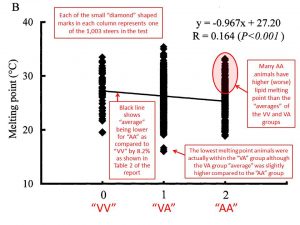
Additionally, as shown below in the annotated “Figure 4” from the research report, the variance between the “averages” of the AA, VA and VV groups were relatively small compared to the large variance of 58% between the best and worst steers measured in the study. This leads to the conclusion that if a Wagyu breeder wished to improve the lipid melting point within its herd through selective breeding, that it would be necessary to perform lipid tests on the actual sire (or offspring from the sire) in order to select sires that had lower melting point lipids.
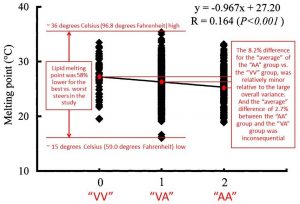
See the attached full research paper covering the SCD gene test done in Japan, in downloadable PDF file format.
SCD Gene Japanese Study Paper, Taniguchi, 4-2-2003
